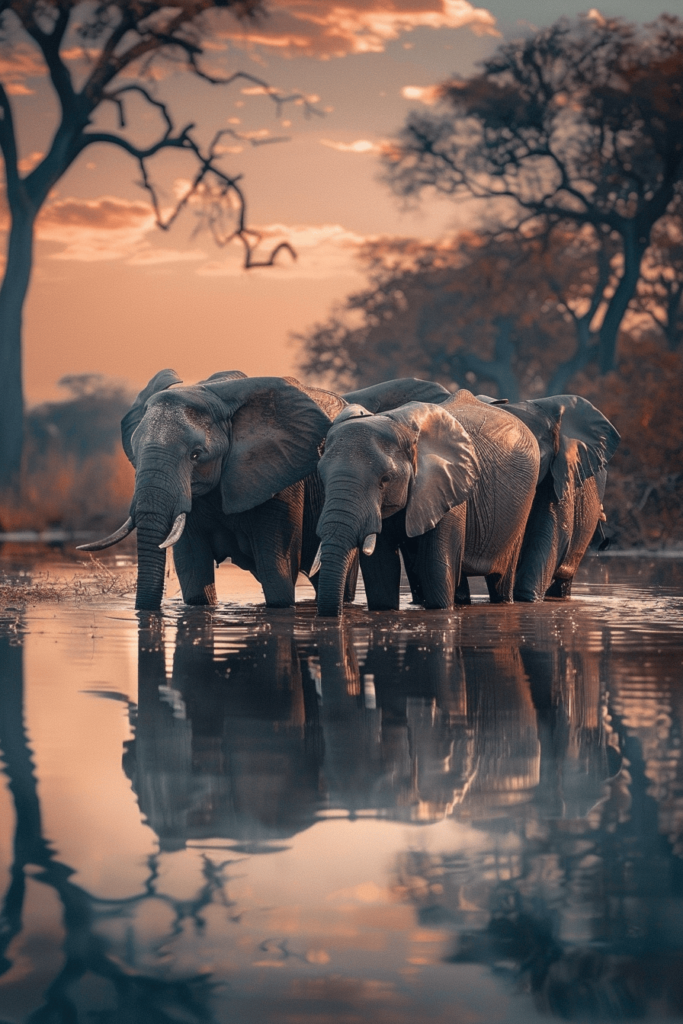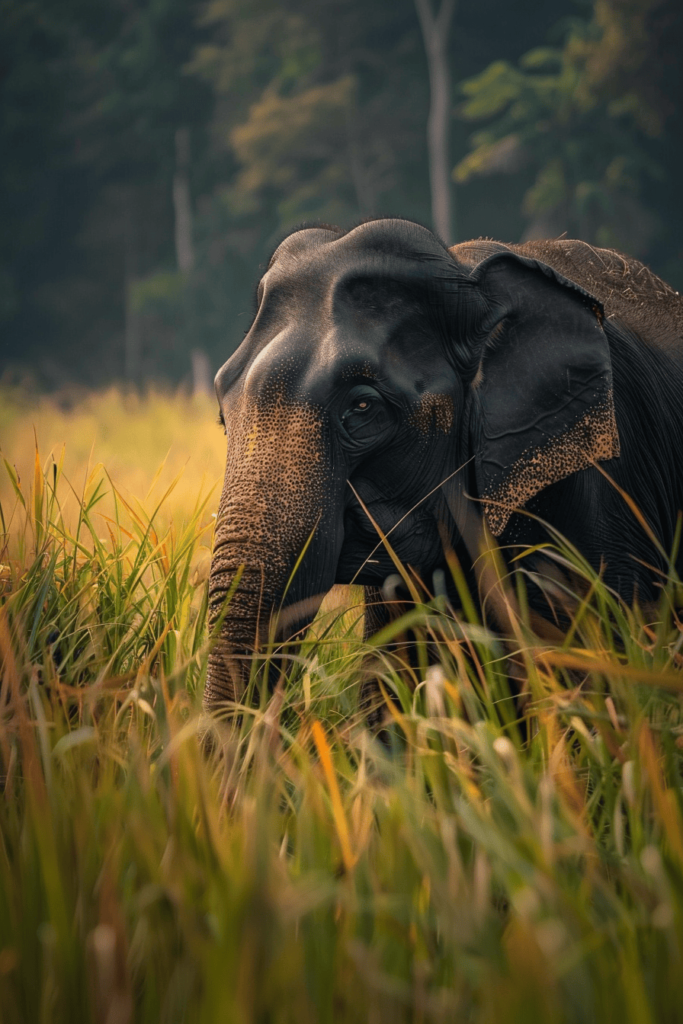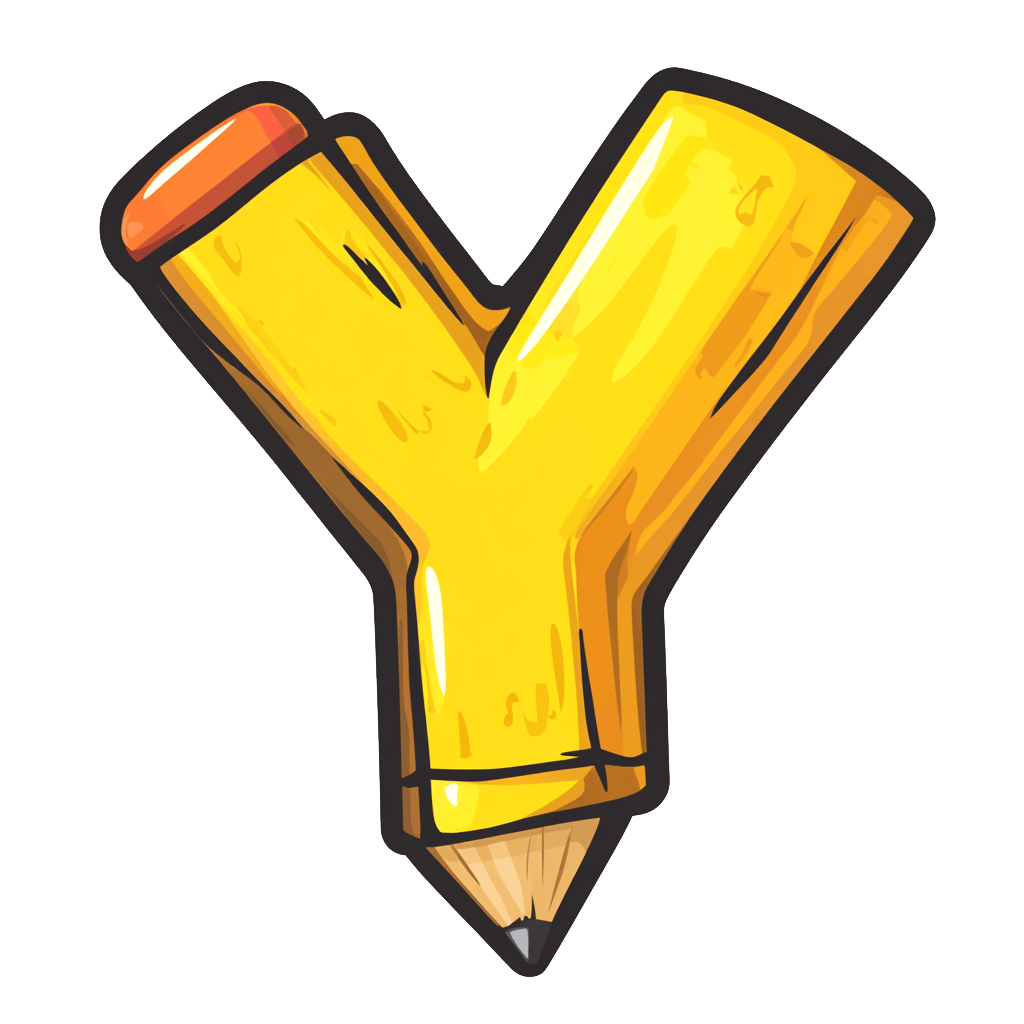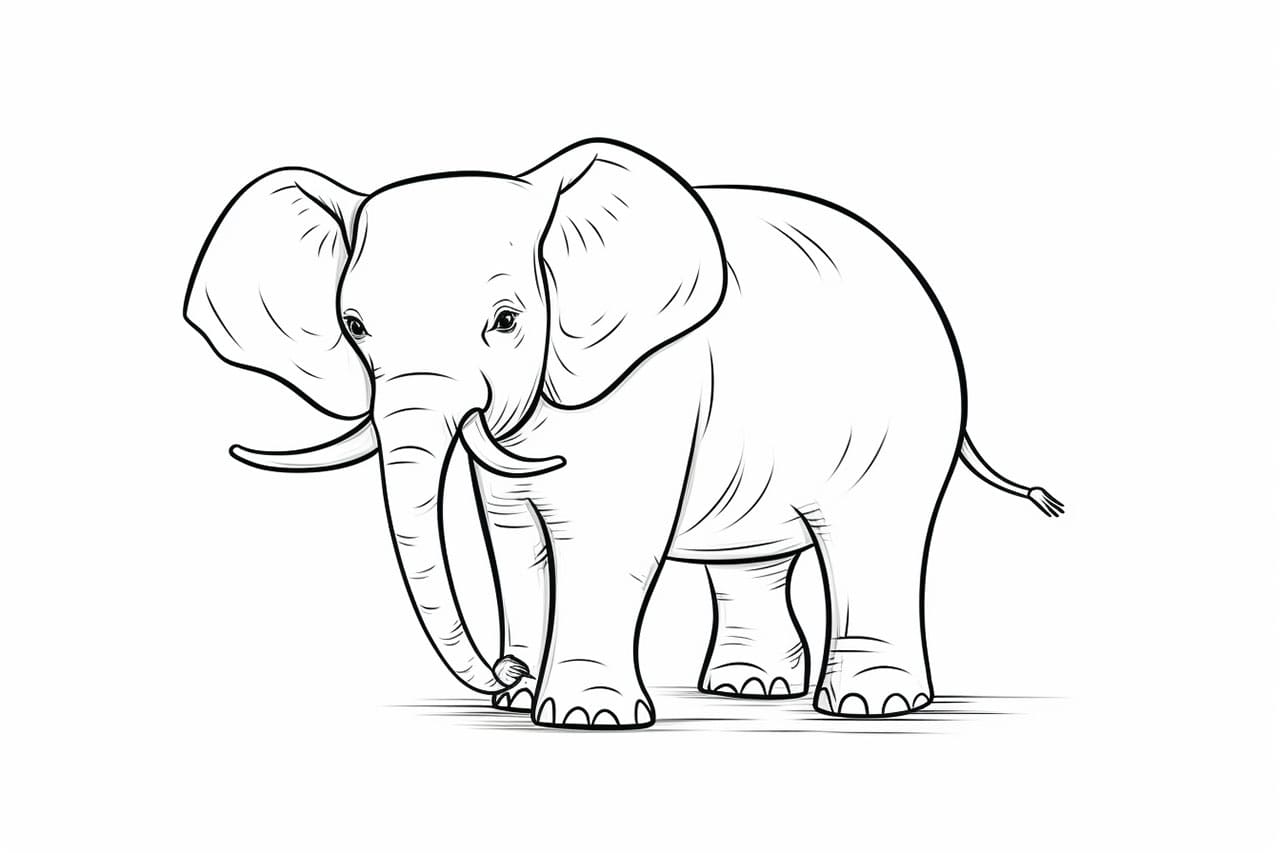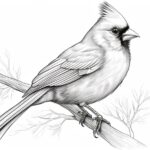
With their immense size, gentle demeanor, and intricate details, elephants are some of the most captivating animals to draw. At first glance, capturing their grandeur and unique features—like their long trunks, big floppy ears, and textured skin—might seem overwhelming. But fear not! With a bit of guidance, patience, and a dash of creativity, you can create an impressive elephant drawing that reflects the majesty of these iconic creatures.
In this step-by-step tutorial on how to draw an elephant, we’ll break down the process into simple, manageable stages. Whether you’re aiming for a lifelike portrayal or want to add a touch of whimsy, we’ve got you covered. If you’re in the mood for a playful twist, don’t forget to check out our guide on drawing a cartoon elephant. Grab your pencils, paper, and enthusiasm, and let’s embark on an artistic safari to bring this gentle giant to life on your canvas!
Materials Required
- A drawing pencil
- Eraser
- Drawing paper
- Reference picture of an elephant
How to Draw an Elephant Step-by-Step
Step 1: Map the Elephant with Basic Shapes
Begin your elephant masterpiece by sketching its fundamental structure. Draw a large circle for the body—it’s the foundation of the elephant’s bulk. Next, add a smaller circle slightly overlapping the top of the body circle for the head. Sketch a gently curved line extending from the head to form the elephant’s back. Finally, draw a straight line from the bottom of the head circle to outline the trunk’s direction. These guidelines will serve as the skeleton for your elephant drawing.
Step 2: Refine and Connect the Shapes
Now, it’s time to refine the overall shape. Transition the basic circles into a cohesive form by connecting the head and body with smooth, curved lines to create the neck and back. Sketch the legs by drawing four thick, sturdy columns extending downward from the body. Remember, elephants’ legs resemble tree trunks—solid and powerful. Curve the trunk slightly to give it a natural, fluid appearance. Adjust the backline and trunk to ensure they mimic the gentle curves of a real elephant.
Step 3: Add the Ears, Tail, and Tusks
Let’s bring personality to your elephant! Start with the ears—elephants have massive, fan-like ears that spread outward from the sides of their head. Use broad, rounded shapes for African elephants or smaller, more triangular ears for Asian elephants. Add a thin, curved tail at the rear, finishing it with a small tuft of hair. Finally, draw a pair of tusks protruding from the head. These should curve gently and taper to a point. If your elephant is a female or an Asian elephant, the tusks might be smaller or absent.
Step 4: Add Wrinkles and Skin Details
One of the most distinctive features of elephants is their textured skin. Use short, curved lines to sketch wrinkles and folds on the trunk, around the legs, and on the ears. Pay attention to the natural curves of the body and how the skin creases when the legs meet the torso or the trunk bends. Don’t forget the subtle details—add folds around the eyes and small lines on the tail for added realism.
Step 5: Enhance with Shading and Depth
Now, bring your elephant to life with shading. Determine your light source and shade areas that fall into shadow, such as beneath the belly, inside the ears, and where the legs overlap. Use a range of pencil strokes—from light hatching to darker cross-hatching—to create depth and volume. Blend the shading gently for a smoother appearance. Add highlights on areas catching the most light, such as the top of the head, back, and tusks, to give your elephant a three-dimensional look.
Step 6: Final Touches
Take a step back and assess your elephant. Refine any areas that feel unfinished or uneven. Erase stray marks and adjust shading where necessary. You can add a bit of background, like a grassy savanna or a watering hole, to give your elephant a natural habitat. For an extra touch of realism, consider adding tiny details like dust on the legs or shadows beneath the feet.
Wrapping It Up: Your Elephant is Ready to Roam!
Congratulations on completing your elephant drawing! By following these step-by-step instructions, you’ve created a stunning portrayal of one of nature’s most majestic creatures. Whether you’re a seasoned artist or just starting out, every drawing helps build your skills and confidence.
Keep practicing, experimenting with different poses, and exploring the incredible details of wildlife art. With time, you’ll bring even more animals to life on paper. Until then, give your elephant a proud place in your art collection—it’s a masterpiece that truly stands tall!
Gallery of Elephant Drawings
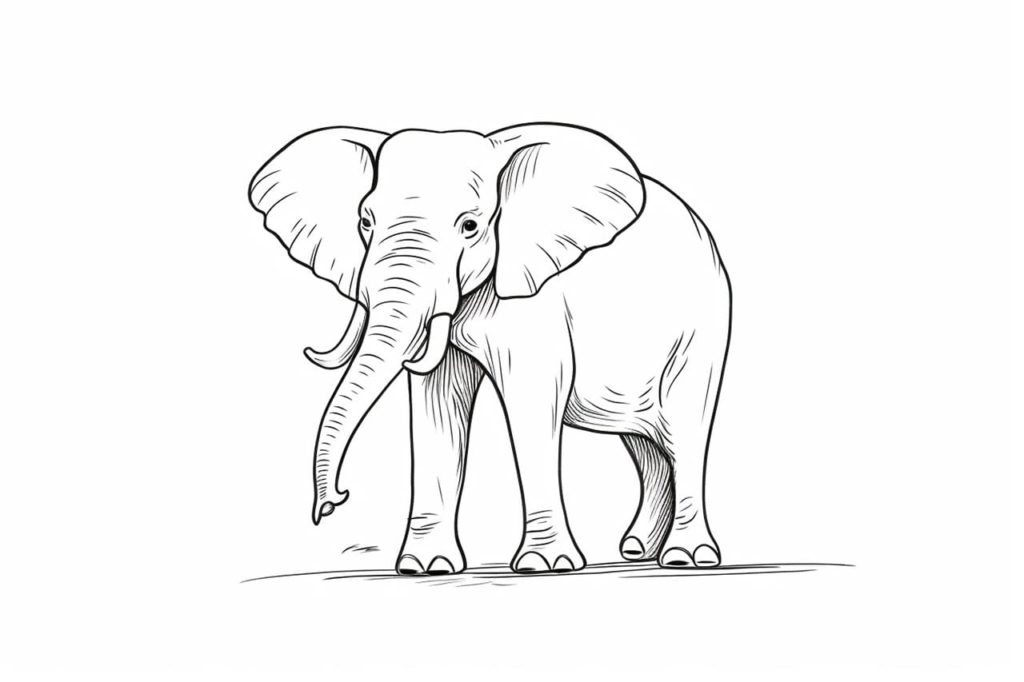
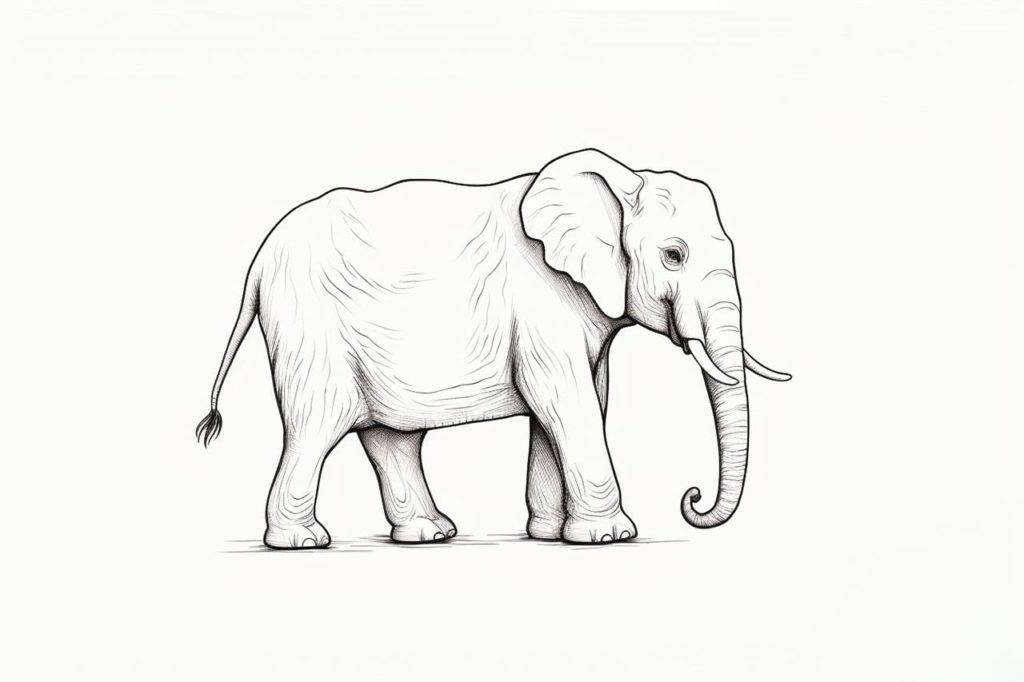

Suggestions of Scenes and Settings for Elephant Drawings
- Savannah Sunset: An elephant silhouette against a breathtaking sunset on the African savannah, with acacia trees and distant hills.
- Watering Hole Gathering: A scene depicting elephants at a watering hole, interacting with each other in a peaceful setting, surrounded by other wildlife.
- Jungle Trek: An elephant making its way through a dense jungle, with thick foliage, vines, and the sun peeking through the canopy above.
- Family Bond: A tender moment between a mother elephant and her calf, showcasing the close bond, perhaps with the herd in the background.
- Dusty Charge: A dramatic scene of an elephant charging through a dry, dusty landscape, kicking up a cloud of dust with birds flying away in the background.
- River Crossing: Elephants crossing a river, with water splashing around them, and perhaps a reflection of the elephants in the water.
- Under the Stars: An elephant standing in the open, under a star-filled sky, possibly next to a baobab tree, evoking a sense of calm and majesty.
- Festival Decor: An elephant adorned with colorful paints and fabrics, participating in a cultural festival, surrounded by people and festivities.
- Mountainous Terrain: An elephant navigating rocky mountain terrain, with a scenic backdrop of mountains and valleys, showcasing their adaptability.
- Playful Mud Bath: Elephants enjoying a mud bath, playfully spraying mud and water, surrounded by lush vegetation, capturing a moment of joy and relaxation.
Reference Photos of an Elephant

